The Inevitability of Idols and Religions
Nov 15, 2020
An essay on how religion and religious thinking/behavior is embedded into our consciousness, even if we do not call it a religion.
Introduction to Epistemological Models
In this essay I would like to explore how atheist, and to a lesser extent agnostic and “spiritual and not religious” people hold beliefs that are fundamentally religious. On the macro-level this would explain how ‘secular’ governments with no state religion end up propagating systems of belief that are also essentially religious.
To start I will introduce two visual models of representing belief, one denoting hierarchy (Figure 1 below) and the other denoting spatial/epistemological relationships. These models and this essay were inspired by the works of Jonathan Pageau and his brother Matthew Pageau, especially the book The Language of Creation: Cosmic Symbolism in Genesis.
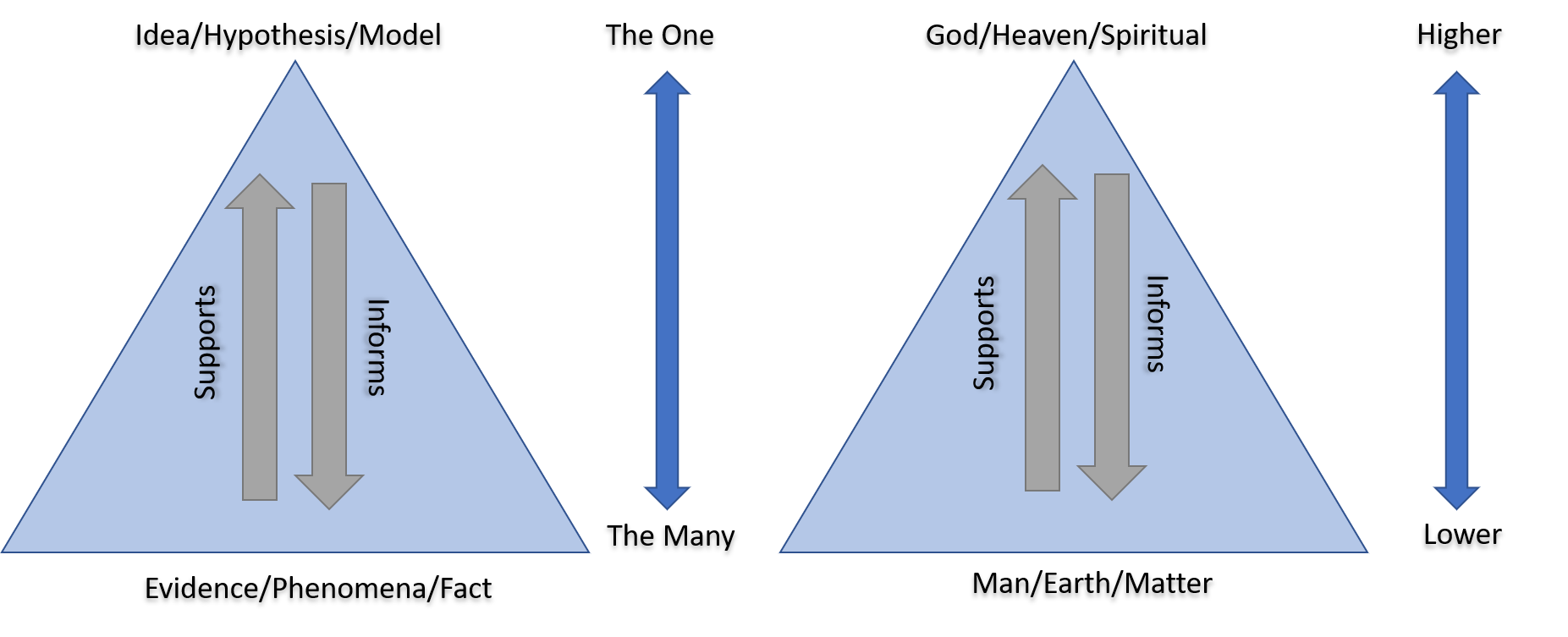
The first model can be represented by a simple pyramid or mountain in which the higher or more “spiritual” informs the lower or more “material” world. In scientific terms a single hypothesis (immaterial) unites to itself many different observations of physical phenomena by offering some explanation for it such as the Big Bang theory proposing that phenomena like red shift is due to an expanding universe. This model can even be applied to organizations, linguistics or to the human being as seen in Figures 2, 3, and 4.
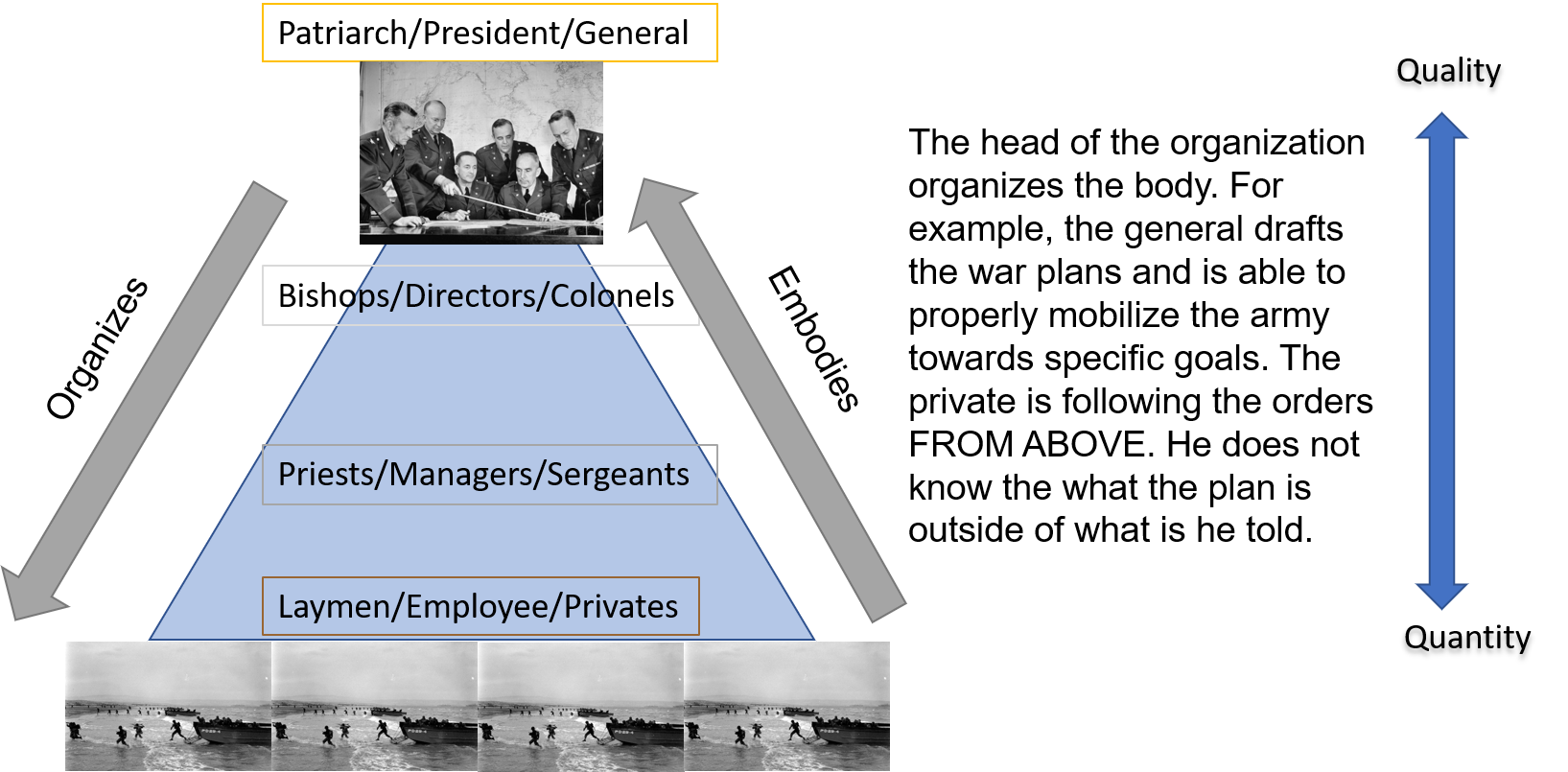
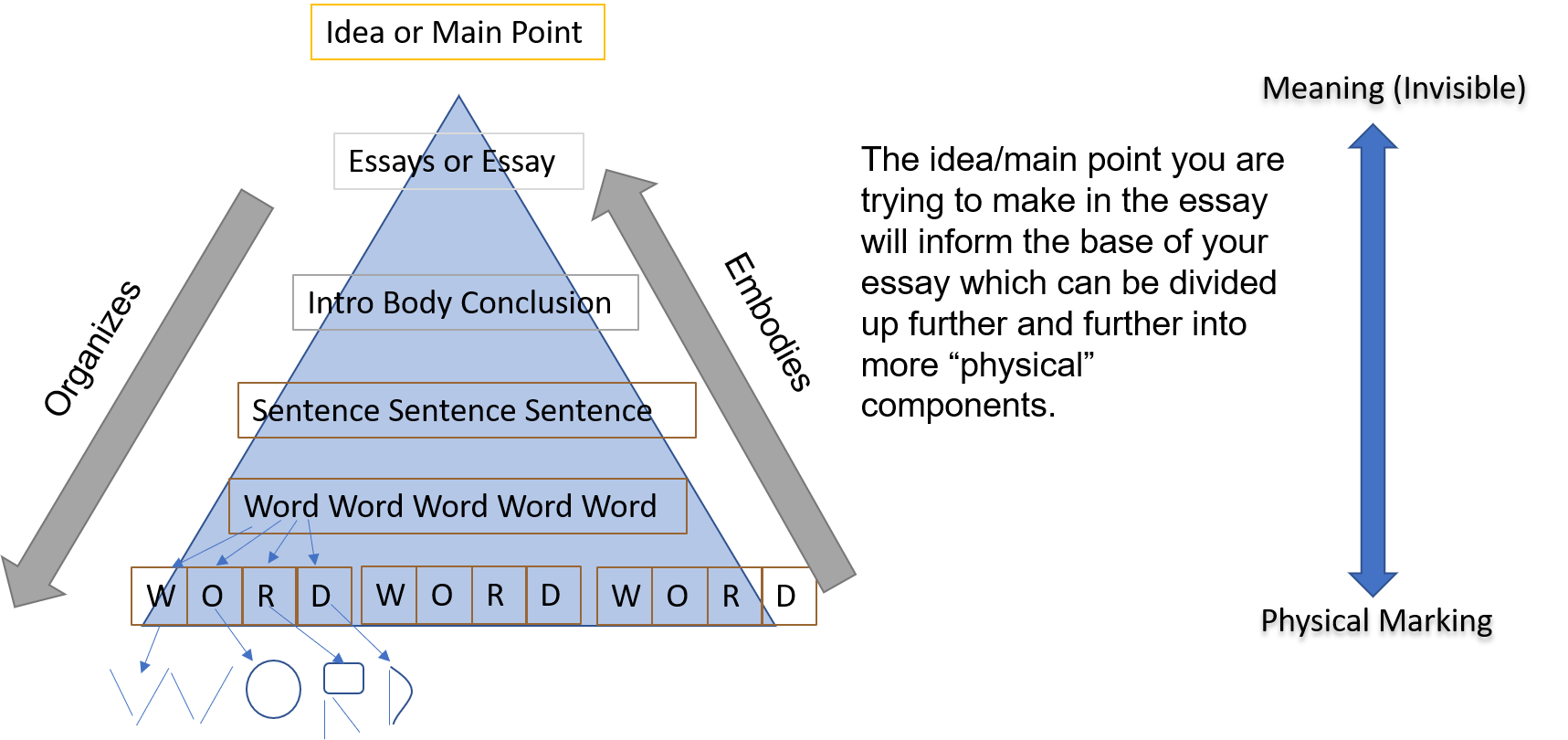
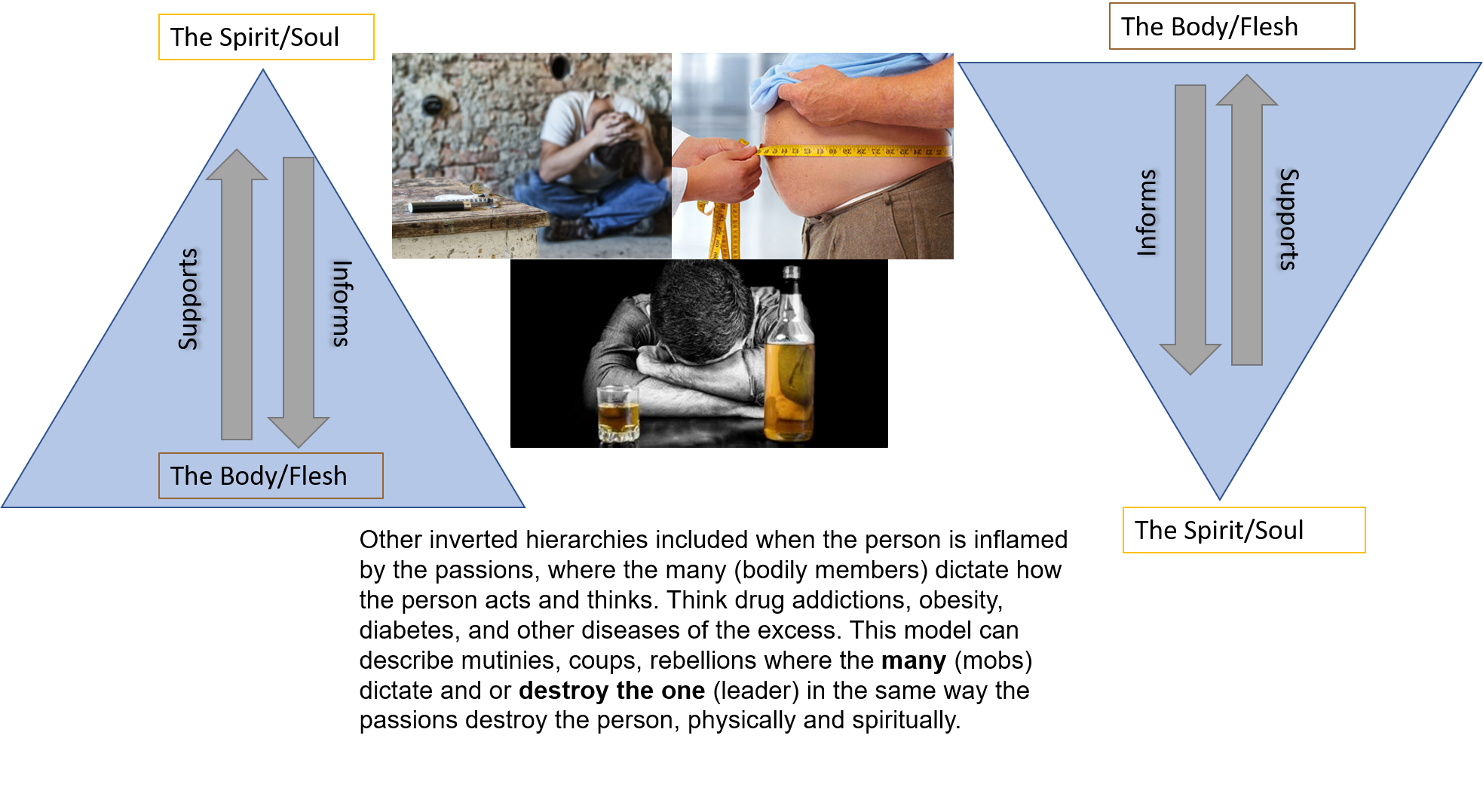
The second model is represented by concentric circles, being an alternative view of the first model. If Hierarchical model were a side or frontal view of a mountain, the circular model (Figure 5) is the birds eye view of it. Both can be likened to the concept of axis mundi or the centre of the world. The centre is contrasted with the margin just as the peak of the hierarchy is contrasted with the bottom. Where the centre is known and orderly, the outside is unknown and chaotic. This model can also be used as a way to represent the relationship between macrocosms and microcosms as well as hierarchies in a similar manner to the first model.
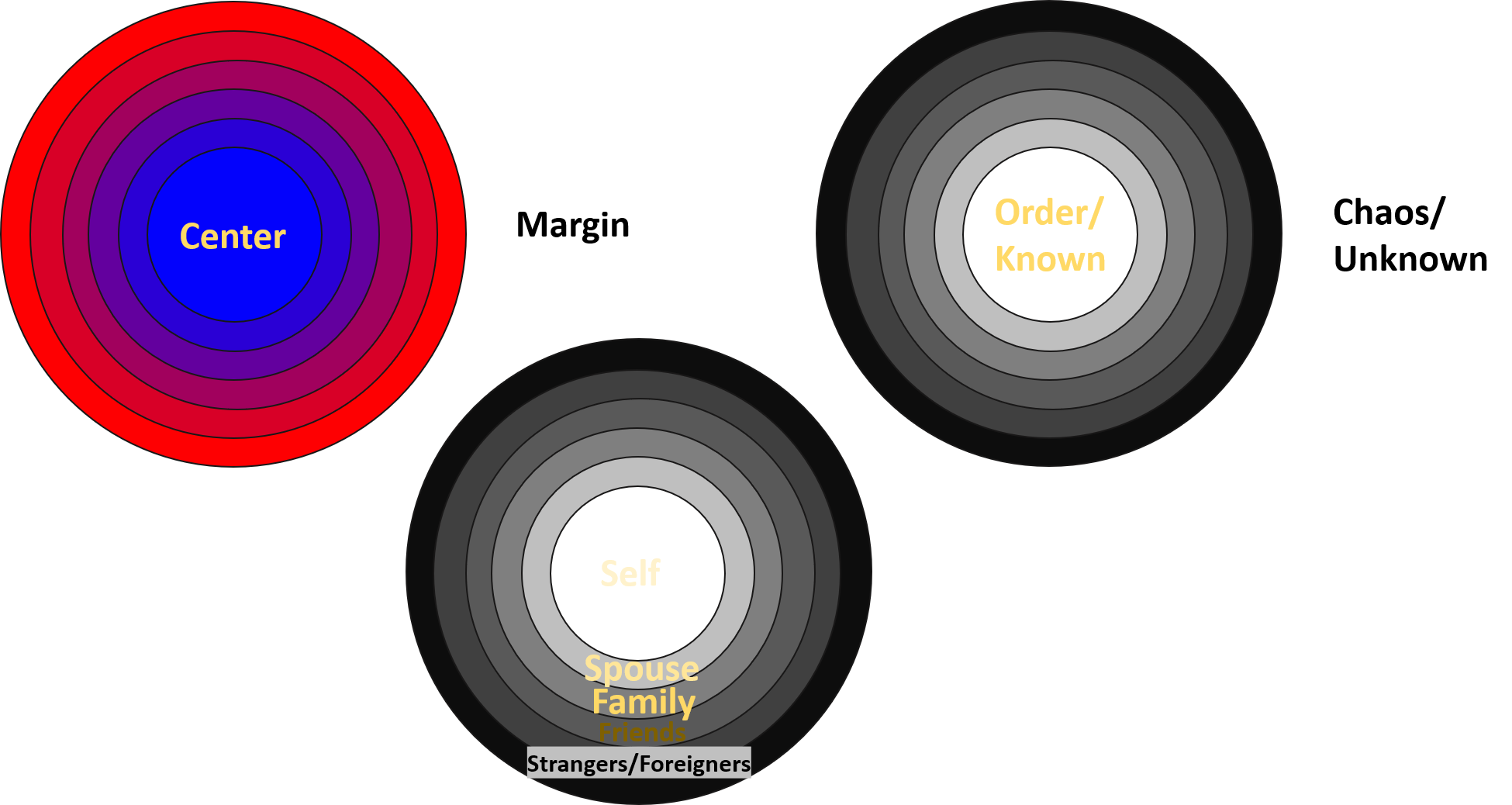
So what does any of these funny figures have to do with religion or idolatry? The answer is simple. We all worship something. This may be a bitter pill to swallow for some readers but allow me to explain.
Defining Worship
Worship does not necessarily mean the typical means of worship one may accustomed to like making pilgrimages to holy sites, praying, or attending religious services, though it can definitely include these things. Worship can look like countless people lining up to see celebrities or artists as in Figure 6 below. One can worship money and orient ones life only to the pursuit of generating wealth. Or one can worship justice and the pursuit of enacting justice by becoming a lawyer and working pro-bono for underprivileged communities. One ‘worships’ or ‘idolizes’ what one holds most important, what is the highest or what the very centre of their being. This will create a pattern of behavior that is predictable as what is highest will organize what is lower. In other terms, our ideas (immaterial) dictate what we do in the world (material).
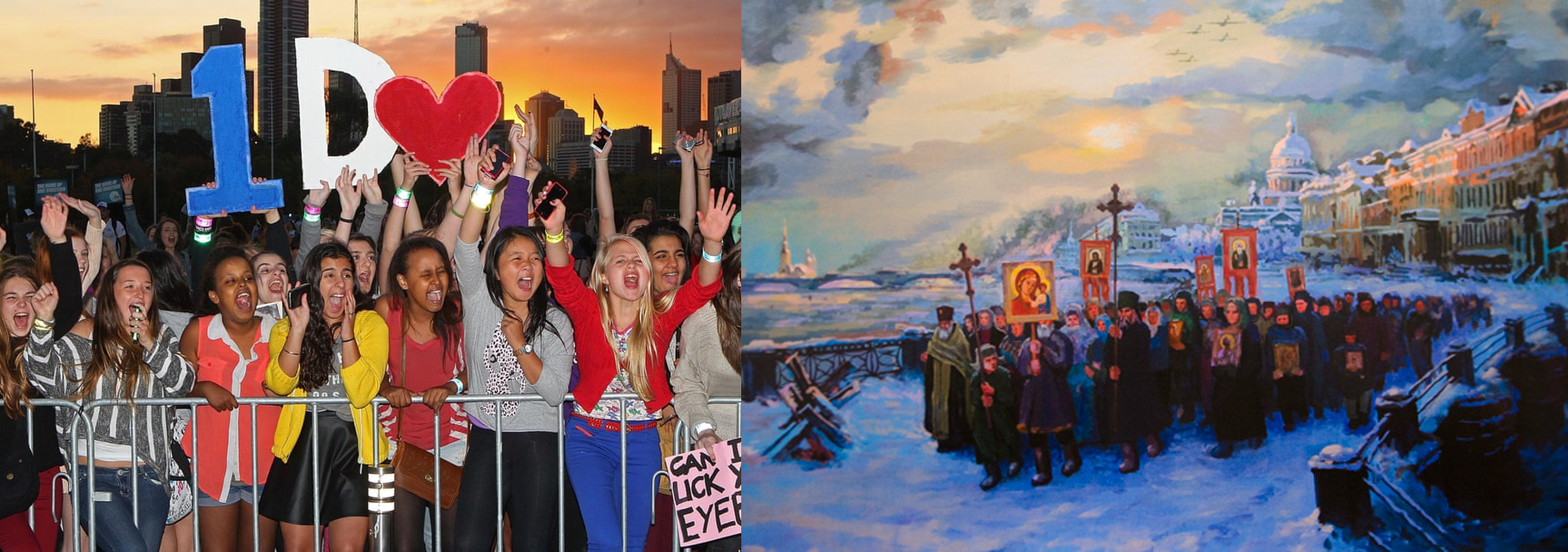
Imagine that within every person there is a mountain representing their identity and values as well as their relationships. The people most congruent with their identity and values lie closest to the center at the peak of the mountain while those that are most opposed to them lie at the margin of the mountain. This creates in-groups and out-groups, as well as acceptable ideas, and non-acceptable ideas. For example, for someone who is ‘spiritual not religious’ that principal value would be ‘love’, ‘peace’, or ‘unity’, while rejecting ‘intolerance’, ‘hate’, and ‘divison’. Or for someone that is a strict athiest who prizes rationality above all else that which lies at the centre would be ‘truth’ and ‘reason’ and opposed to ‘lies’ and ‘faith’. It is unavoidable that they gather some things into themselves while pushing other things away from themselves.
Similar to how the head of a hierarchical organization directs those who are lower, the centre will organize everything outside of it. Once again what you believe (spiritual/ideological) will dictate how you act (material). For the atheist, prioritizing a materialist truth above all else, they will rule out the admission of certain ideas they deem to be false from entering into the centre. As a result this may preclude the entrance of people they disagree with into their life, namely deeply spiritual people who hold metaphysical beliefs contrary to those of their own, and will generally exclude the regular attendance of corporate gatherings of people with beliefs different than their own such as the attendance of a mosque, church, etc. If they do admit religious people into their lives it will be despite those differences rather than because of them. Lastly, the spiritual beliefs may be humored by the atheist in relations with spiritual people but never allowed to displace the fundamental centre. In short, the atheist does not commune with the believer because they are not of the same spirit.
Atheism, and any other belief system, named or unnamed, have ‘priests’, ‘sacred texts’ ‘churches’, ‘dogmas’, ‘cosmologies’, ‘ethics’, ‘processions’ ‘conversions’, etc. Their priests are those who advocate for truth in a convincing manner like Sam Harris, Bertrand Russel or Christopher Hitchens. Their ‘sacred texts’ are essays like ‘Why I Am Not a Christian’ or ‘The God Delusion’. Their churches are the secular universities. Their dogma and cosmology: Darwinism, and the Big Bang theory and so on and so forth. Their conversion stories mirror the stories of atheists converting into faiths, of being ‘enlightened’ from ‘darkness’ and of finally being able to see the ‘truth’ and the ‘light’. To hold something to be important, is to have set it apart from the rest, and to place above all else as sacred. Whether or not the term sacred is used is not important. What is important is that the essential meaning and the patterns of behavior is the same as seen in Figure 7 below.
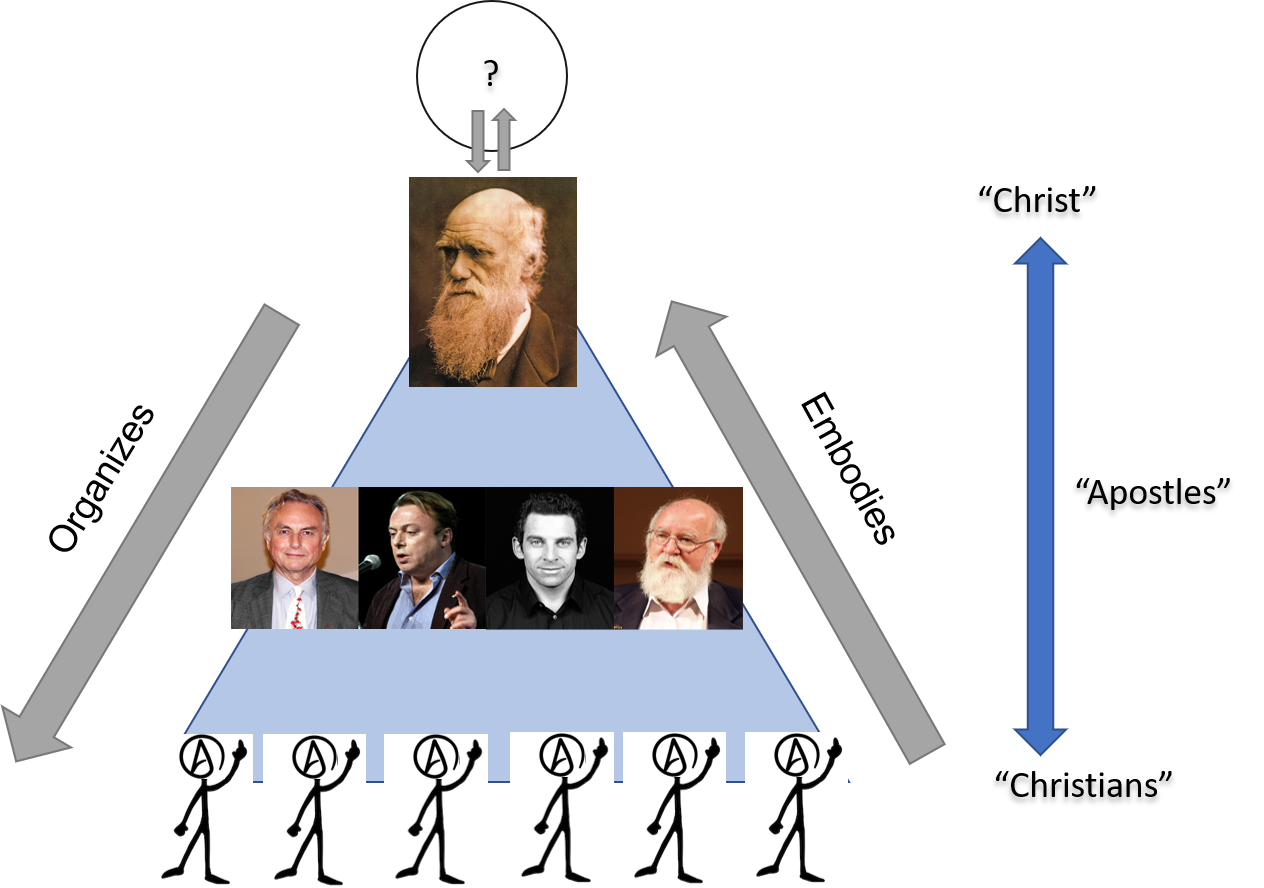
The religious framework can be easily seen in Figure 8 below, where you can imprint whatever ideology, religion, etc on the top in the hierarchical model and in the centre in the circular model.
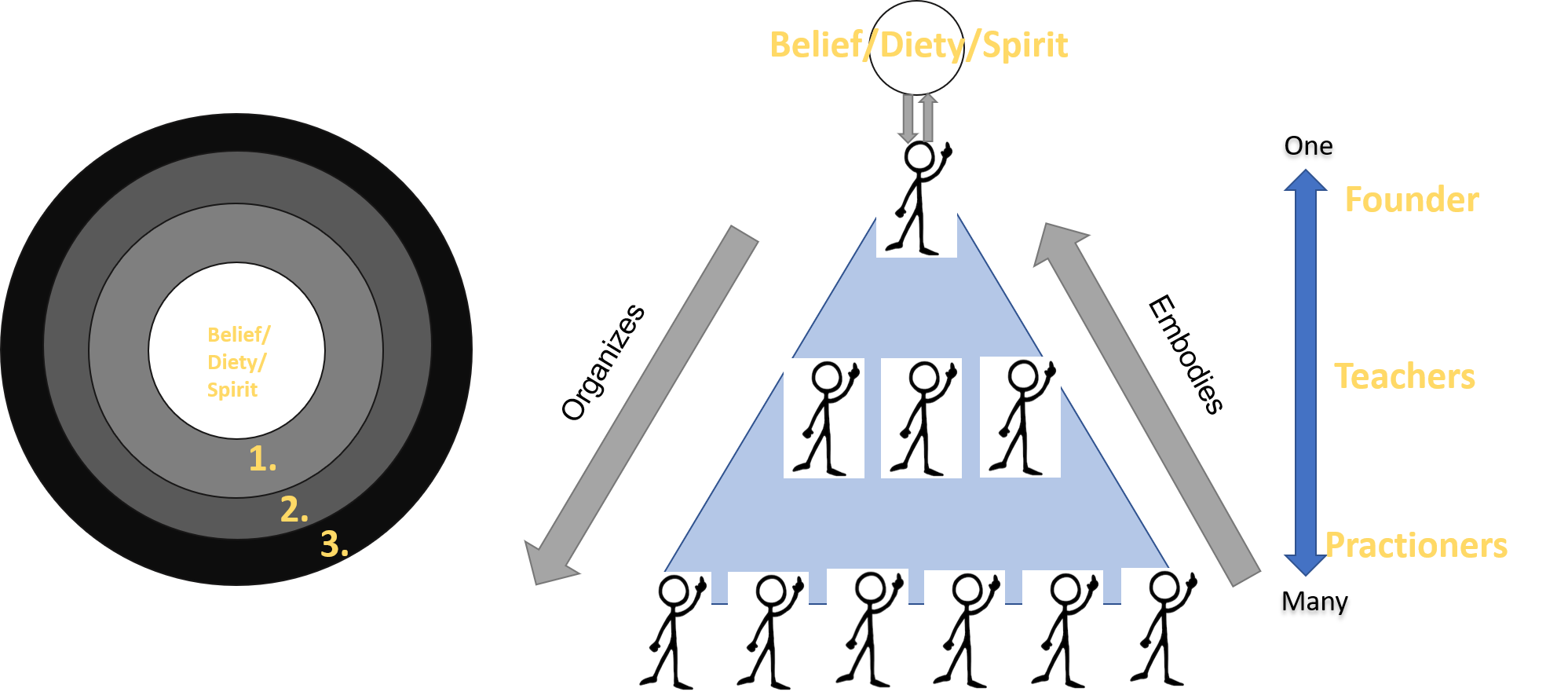
Circles are labeled as below with Christian terminology and where they would be placed in OT Temple worship.
- Those who perfectly ‘embody’ the belief ie the ‘saints’, and to a lesser degree people who are part of the clergy. The “high priest” who can enter into the Holy of Holies (see Figure 9).
- Those who ‘embody’ the belief and participate in life with Christ ie regular Christian laymen. The “priests” who can enter in the Holy Place.
- Those who do not ‘embody’ belief and have yet to be initiated ie non-believers. The people kept in the outer court.
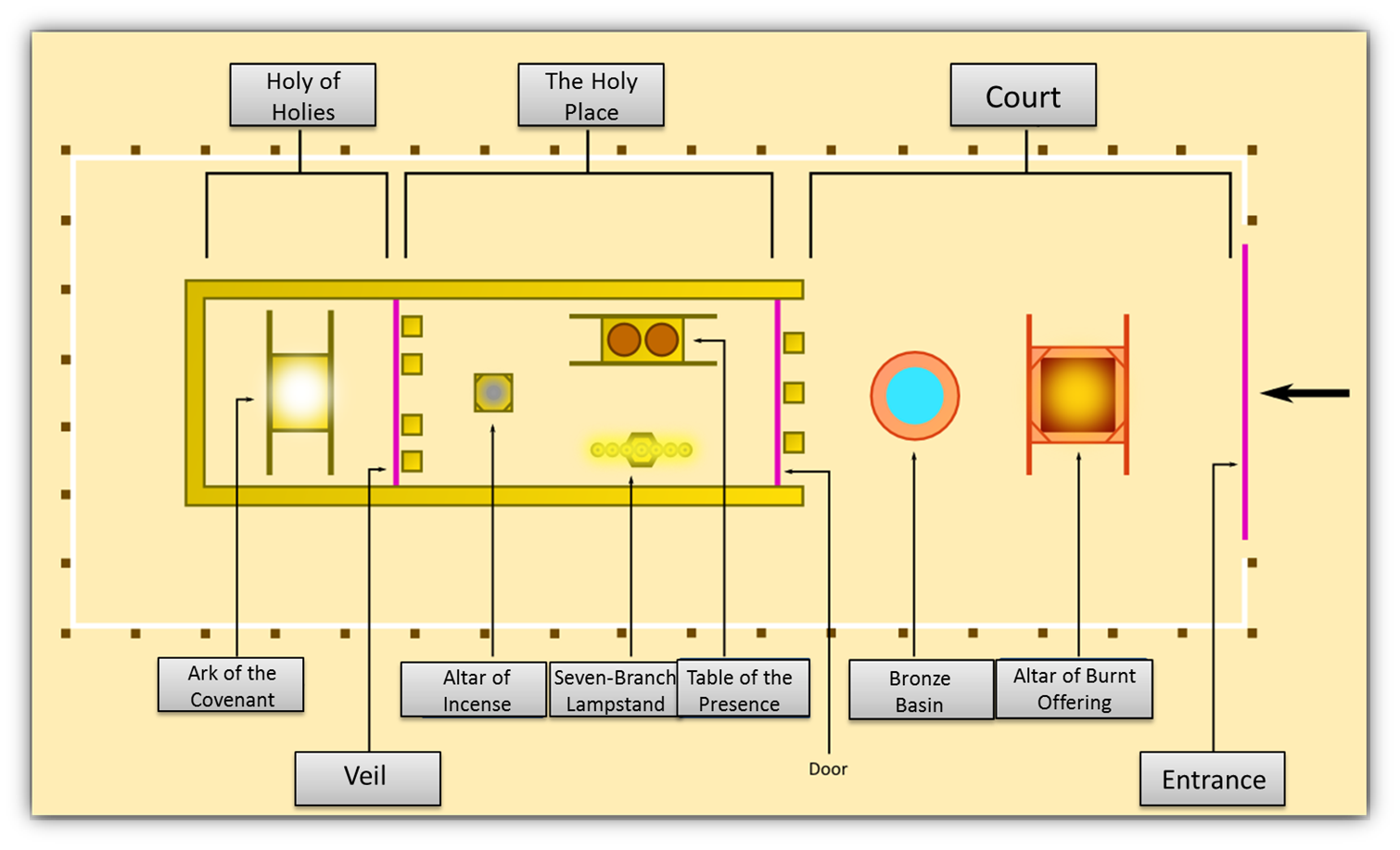
Forms of Worship in Modernity
1. Worship of the Self
Of the three this is probably the most visible one and the root of many other forms of worship. People subject to this include those on social media who want to become ‘influencers’ or people whose career depends on their image. Their entire lives revolves around crafting an image of themselves to project into the world. The only value that they can extract from life is from the amount of followers or likes they can procure. This can be caused from narcissism, vanity, or love of fame (or a mix of all three).
This can also be exemplified in the hedonistic lifestyle that revolves around sensual pleasures. The sort of life that Dan Bilzerian or Paris Hilton leads comes to mind. The highest value is the self, or whatever pleasure one can provide to the self. For men it can resemble a teenage boy’s wet dream of sleeping with countless amounts of woman, and playing video games day and night with no homework or responsibilities. For woman the perfect life may involve being the most famous and beautiful woman in the world, to be coveted by both men and women alike.
But even if clear narcissistic manifestations of self-worship are set aside, it is embodied in more subtle ways. Such worship of the self can described simply as removing God from the highest and supplanting God with the self as seen in Figure 10. This is the meaning of the 3rd chapter of Genesis in which Adam and Eve ate from the knowledge of good and evil and became like God knowing good and evil: that Adam and Eve forgot their place in the celestial hierarchy and in doing so severed themselves from God. No longer occupying the space between heaven and earth, man answers not to God but only to himself, and no longer the mediator between those two spaces he is an autocrat over himself and all of the world. Now in the position of God, he dictates for himself what is right and what is wrong. This was the meaning of the famous quote by Nietzsche “God is dead”.
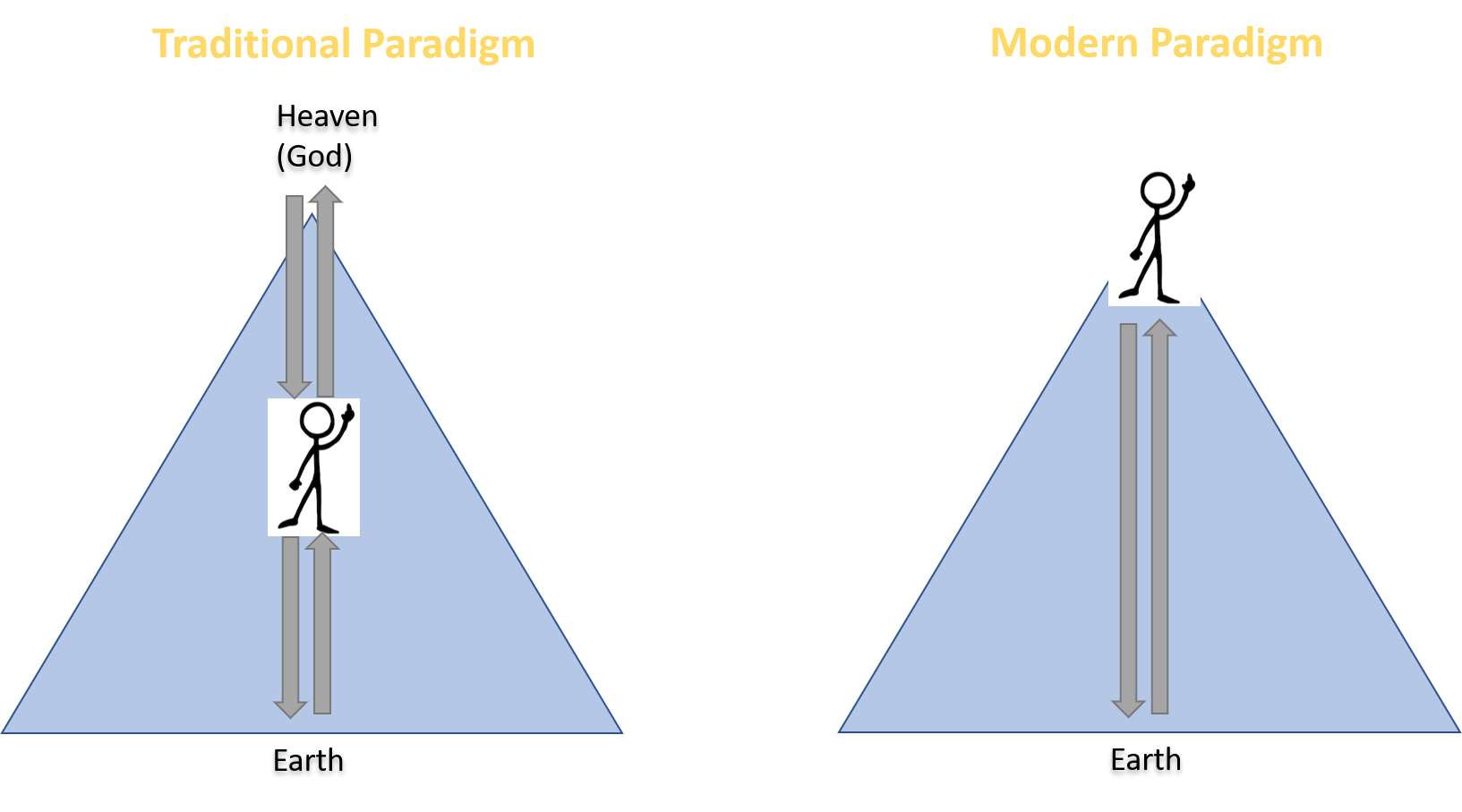
However this modern paradigm overlooks the fact that just as it is nature hates a physical vacuum, so it is the case with spiritual vacuums; something always fills the void. This is akin to Jung has said “People don’t have ideas. Ideas have people”.
There is not a single person in the world or in history without some sort of religion, worldview, or some sort of value system upon which they act in the world. Without prioritizing as the highest, or most important (ie worship), we simply wouldn’t act because we would be paralyzed by indecision. When you cast out one “spirit” another comes to take its place. For example, a person may cast off the spirit of Islam, and take on the spirit of atheism, humanism, environmentalism, or Hinduism, or any other -ism. Ultimately, this is not a modern phenomena as it is a phenomena that has been exacerbated in modernity in the wake of the revolutionary spirit that characterized the political unrest of the 20th century. I will describe the origins of this spirit in the next section.

2. Worship of Government (Statolatry)
The revolutionary spirit is one that is borne from a well-founded discontentment with the state of the world. There is almost an implicit belief by even the most ardent atheists that things are not right with this world, as if there really were a Garden of Eden to which they were barred from returning. East of Eden, they begin to worship themselves, and of humanity in general. If only we were to strive towards it as a species, and if only there were proper governance. A return to Eden is not only desirable, but possible and within a stones throw. This is a worship of mankind and of its potential.
The worship of the self and of the species will grow beyond the confines of the individual as we are intrinsically social beings. We like to commune with others and form a body/community around a common idea or goal. This body then acts in order to expand itself, either by biological means (reproduction) or ideological means (evangelism) and to achieve its goals. The body most pertinent to this day and age is the growing movement of socialism in the West. This branch of socialism is superficially different than the ones seen in Maoist China, or Leninist Russia, yet is still fundamentally the same at its heart. It idolizes the state as the paramount means by which some form of utopia or Paradise will be materialized. This statolatry is often interwoven with secularism, humanism, social justice, progressivism, and scientism.
It champions justice, equality, and love towards one’s neighbor, all of which are good values in the right context. However, it is inevitably contingent on restrictive control of not just the bodies but of the very souls of the poor citizens wherever such governance is established. In an analogy to an individual, a government can never be without a religion as it cannot help but to designate something as the highest (like in Figure 12). The 20th century saw the rise of dozens of states similar to that of the Soviet Union, in which leaders began to take on traits and powers that could only be comparable to the Roman emperors or Babylonian kings of old. In the case of the Soviet Union which abolished Christianity as the official state religion, the state quickly developed its own form of religion revolving around Stalin as an all-knowing and all-powerful leader. His name and face appeared everywhere, in homes, in public, in books, and in movies. Where people once called EO priests “father”, they now called Stalin “father”. Where people once thanked God for blessings they now thanked Stalin.

In the same way the divine right of kings in Europe or the mandate of heaven of China gave legitimacy to a ruler because he was an image of the heavenly Father, the dictators of the 20th century were considered legitimate because they embodied the “spirit” of communism or fascism. In the former case, that election to the throne was from above and in the latter case, the election is typically from below (ie from the masses). In both cases however, the seat of power will be overturned if they are not representing the “highest” properly. In the current epoch, we seem to be in the throes of the final revolution. The spirit of the 21st century will be of the same ilk as of the last, an overthrow and replacement of God with man. The implicit doctrine of apotheosis will be manifested through the promise of freedom, liberty, equality, and justice by the overthrow of the current order and the replacement of it with a new state. As if such things were given by the state rather than God. This new state will transform not just the political realm, but the economic, social, and spiritual realm, becoming the center of all things. In the US such attention to politics, and the importance of being “in the know” and keeping up with current events to the point of obsession, sometimes to the point of damaging ones spiritual or mental health is a form of statolatry.
3. Worship of Science (Scientism)
This last form of worship is related to the last two, as it is another form of self worship. Empiricism, or the belief that knowledge comes only or primarily from sensory experience, is foundation of the scientific method. The exaltation of this epistemological method has led directly to scientism which is defined as such: the belief that science is the absolute and ultimate method of defining truth, and that given enough time all human problems will be dealt with and solved by science alone. One often hears on the headlines of pop science “Science says x”, or “Scientists say x” as if science were an autonomous entity speaking through the scientists to enlighten the masses.
Perhaps it is most revealing if we take the testimonies of science advocates and deconstruct them. See Figure 12 below.
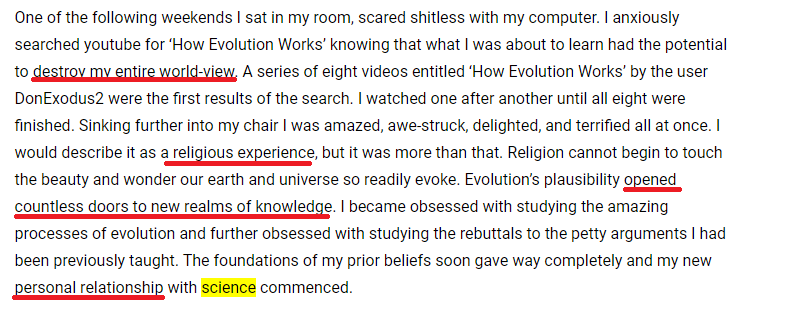
The first and last red underlined phrases recognize that science destroyed his faith ie removed the spirit and paved the way for a new ‘spirit’. In a similar manner in which Christians have personal relationships with Christ, Jake began to have a ‘personal relationship’ with science. He even describes this enlightening experience as something akin to a ‘religious experience’. In the last paragraph he even links to a video named ‘Science saved my soul’.
I have taken a short snippet from that video below. “It’s like the universe screams in your face. You know what I am, how grand I am, how old I am, how do you even comprehend what I am? What are you compared to me? And when you enough science you can just smile at the universe and reply dude I am you.” The only thing that came into mind when he personified the universe was the conversation that Job had with God in which God lectures Job saying “Where were you when I laid the earth’s foundation? Tell me, if you understand. Who marked off its dimensions? Surely you know! Who stretched a measuring line across it?” (Job 38:3-6). Even when atheists cast off the yoke of one religion they can’t help but to use religious language and embody the religious framework and use some unifying principle to organize their worldview. They have replaced the God and the mystery of God with the universe and the mysteries of the universe and theology with science.
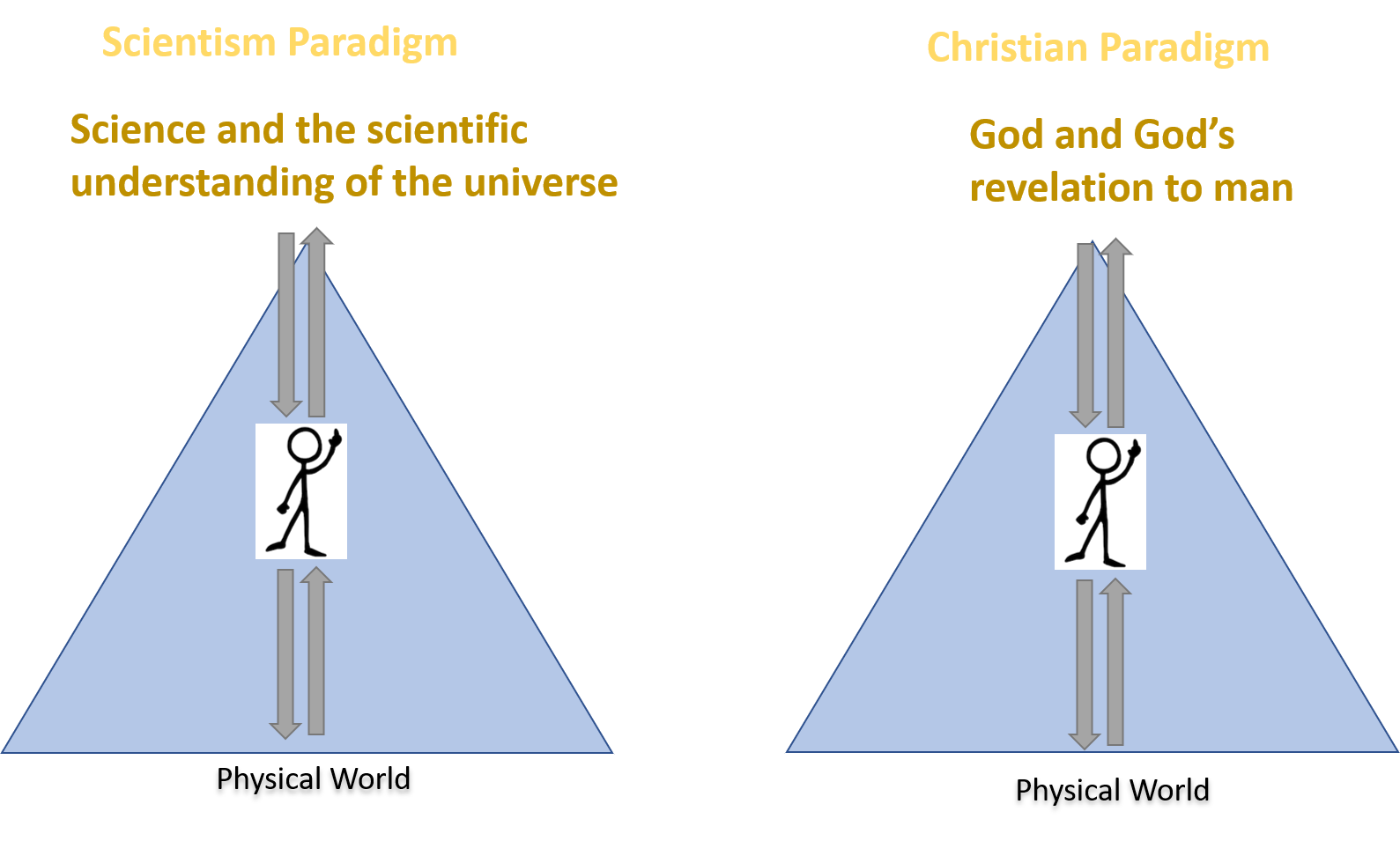
By placing science at their very centre they have begun to view EVERYTHING through the scientific lens, which typically entails empiricism and materialism. Thus categories like the soul, and the spirit, begin to be reduced to imaginary categories since they have a material basis as all things do. This is not dissimilar to an atheist converting to Christianity then beginning to view things like sex and the physical body differently, as something sacred and to be treasured as the temple of the Holy Spirit. While Christianity imbues spiritual meaning onto everything, science strips the very same things of meaning. However, in that very vacuum of meaning the scientific worldview seems to always reestablishes meaning. According to science the universe is just the universe that is indifferent and without feelings or actions, and yet the universe “teaches” us? It “makes” us feel small? It “inspires” awe? It can even “save” our souls?
Conclusion
By this point I hope that I have properly clarified how religious structures are inevitable, and that even people shun religion like atheists can act “religious” or “spiritual”. The main points that I would like to reiterate are the following…
1) Everyone worships something because everyone holds something to be important above all else. 2) That centre organizes everything outside of the centre, ie ourselves, and the world around us. 3) Self-worship, state-worship, and science-worship are common forms of worship in modernity in the absence of Christian worship in the West.
Links
http://press-files.anu.edu.au/downloads/press/n2129/html/ch03.xhtml?referer=2129&page=9 - Stalin’s Cult of personality
https://new.exchristian.net/2011/01/from-baptist-to-atheist-my-deconversion.html#.X7GmYhbQhhE - Deconversion
https://www.youtube.com/watch?v=r6w2M50_Xdk&feature=emb_title - Video mentioned in essay above
Share